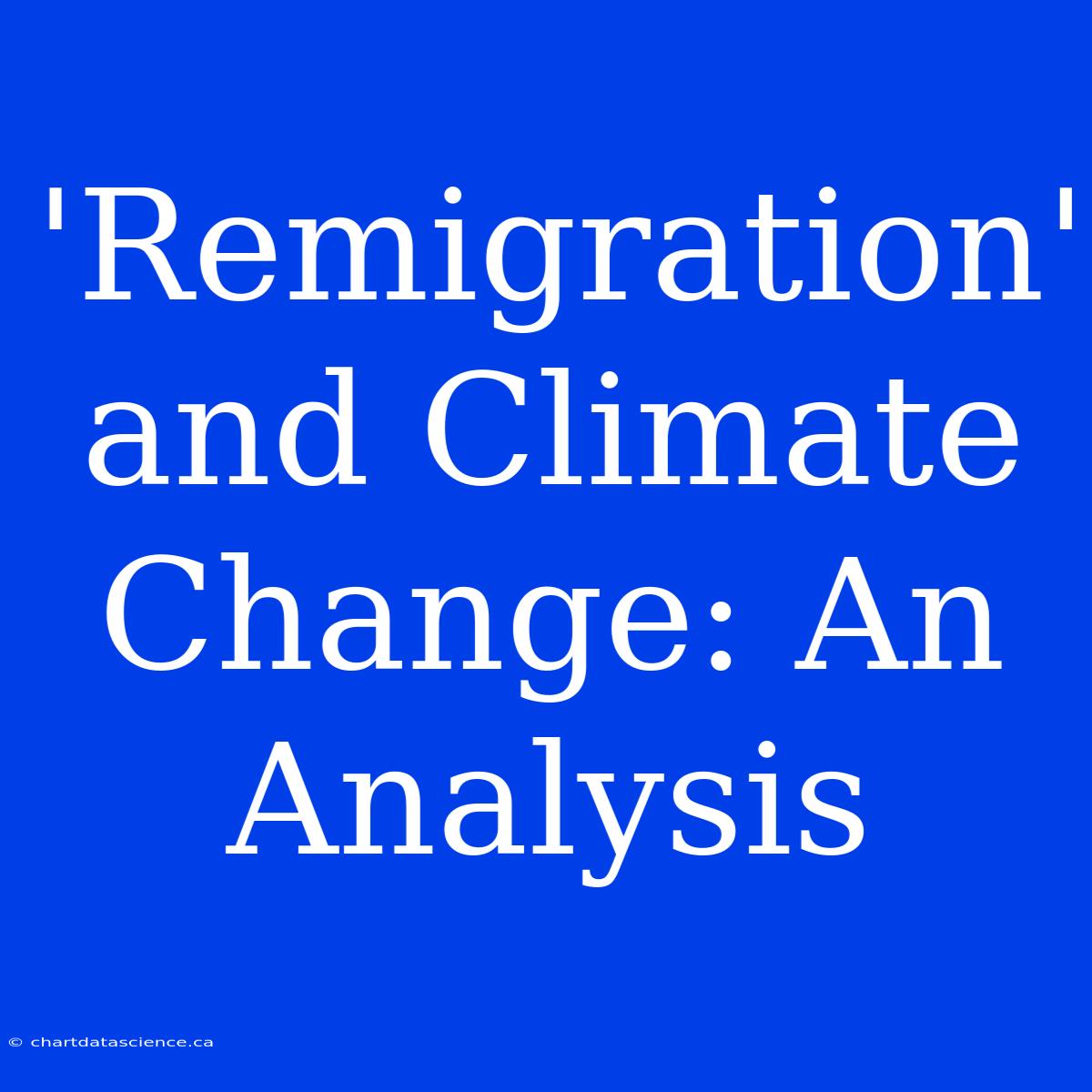Remigration and Climate Change: An Analysis
The world is facing a global crisis, with climate change impacting every corner of the planet. Extreme weather events, rising sea levels, and resource scarcity are forcing people to make difficult choices. One increasingly relevant concept in this context is remigration, a voluntary return to a previous place of residence.
What is Remigration?
Remigration, also known as reverse migration, is the movement of people back to their origin or ancestral homeland. It's a shift away from the traditional migration patterns where people move from rural areas to urban centers or from developing countries to developed ones.
Climate Change and the Rise of Remigration
Climate change is a key driver of remigration. As climate-related disasters increase and resources become scarce, people are forced to re-evaluate their living situations. This can include:
- Loss of livelihood: Farmers in drought-stricken areas may find it impossible to continue their work, forcing them to return to their ancestral lands.
- Rising sea levels: Coastal communities experiencing flooding and erosion may be displaced and seek refuge in inland regions.
- Extreme weather events: Frequent hurricanes, wildfires, and other natural disasters can cause long-term damage and make living in affected areas untenable.
Examples of Remigration due to Climate Change
- Pacific Islanders: Rising sea levels and coastal erosion are forcing many islanders to relocate to other countries, often to New Zealand or Australia.
- Bangladesh: Extreme flooding and salinity intrusion are pushing people to seek refuge in less vulnerable areas, leading to internal displacement.
- United States: Wildfires and droughts in the Western US have contributed to a rise in people returning to more humid and less prone regions.
Remigration: A Potential Solution?
Remigration offers a glimmer of hope in the face of climate change. It allows people to return to areas that may be less vulnerable to climate impacts. This could lead to:
- Reduced pressure on urban areas: As people return to rural areas, it could alleviate overcrowding and resource scarcity in cities.
- Increased resilience: Rural communities often have strong social networks and local knowledge that can aid in adapting to climate change.
- Revitalization of rural economies: Returning migrants could bring new skills and perspectives to rural areas, helping to revive local economies.
Challenges of Remigration
Despite its potential, remigration faces significant challenges:
- Lack of infrastructure: Rural areas may lack the infrastructure to accommodate a surge in population.
- Limited job opportunities: Rural economies often lack diverse employment opportunities, making it difficult for returnees to find work.
- Social integration: Returning migrants may face cultural differences and social barriers that hinder their reintegration into their communities.
Conclusion
Remigration is an emerging trend that is likely to become increasingly relevant in the context of climate change. It offers a potential solution for coping with climate impacts but also faces various challenges. Addressing these challenges will require collaborative efforts from governments, communities, and individuals.
Keywords: Remigration, Reverse Migration, Climate Change, Climate Impacts, Displacement, Sustainability, Rural Development, Adaptation, Resilience, Future of Migration.

